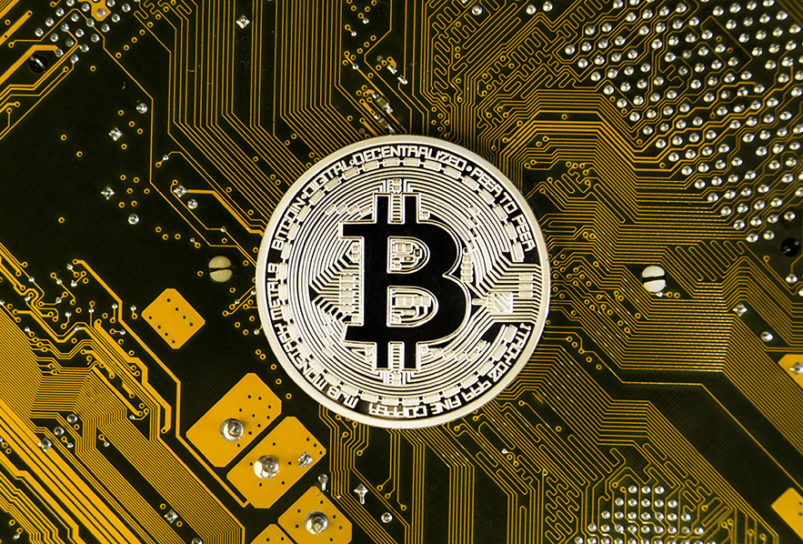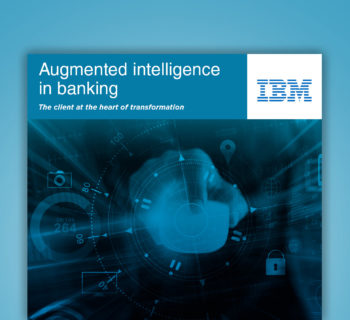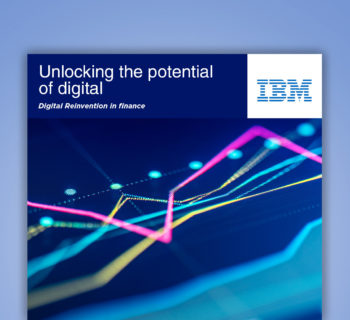If one has to summarize the Fintech revolution through blockchain technology in one word, then that word would be “Trust”. However, the irony is that the adoption and use of the blockchain technology for virtual currency casts a doubt on the conventional financial system. The regulators are wary of these technologies, when it is used outside the well-established and well defined financial regulatory systems.
We as a civilization have evolved a long way from decentralized barter system to a well-regulated centralized financial system. The central theme of this evolution has been the trust that we have in our Government and which trickles down to its financial institutions and then to its citizens. Now when the same centralized and formalized structure is being challenged by a decentralized structure, in which the value of money is being transferred without the requirement of validation from a central regulatory authority, we start to wonder whether we are again moving into an era, where barter system was the norm for transferring the value from one person to another.
In a very recent Rajya Sabha debate on 02 January, 2018, the Hon’ble Finance Minister of India, once again reiterated that cryptocurrencies like Bitcoin are not legal, lawful tender. He also accepted that the lack of dependence on the state has made cryptocurrency function with a certain amount of anonymity.
In order to understand the concern of the Indian Government, we need to understand the role of money in our society and the how it is used store and transfer the value from one person to another. Money medium of payment consists of coins and paper money. Currency is a system of money in general use in a particular country.
In India the issuance of the currency is controlled by the Reserve Bank of India (“RBI”). The RBI manages currency in India and derives its role in currency management on the basis of the Reserve Bank of India Act, 1934. The Government of India only has the right to mint the coins and one rupee note under the Coinage Act, 2011. The designing and minting of coins in various denominations is the responsibility of the Government of India.
The Reserve Bank of India Act, 1934 (“RBI Act”) recognizes rupee coins and bank notes as legal tender. Section 31 of the RBI further provides that no person in India other than the RBI or, as expressly authorized by the Central Government shall make or issue any promissory note expressed to be payable to the bearer of the instrument. The negotiable instruments such as cheques or drafts, payable to bearer on demand or otherwise are drawn on a person’s account with a banker.
It is because of this section, we find a specific inscription on all the banknotes issued by the RBI, i.e. “I promise to pay the bearer a sum of….”. Thisis the promise by the RBI backed by the Government of India, which preserves the value in the banknote. These banknotes are payable to the bearer and does not have an expiry. This type of money is also called fiat money which is guaranteed paper or coin money, the value of which is that assured by the Government and the value indicated in them by without linking them to underlying gold or silver.
The issue arises when the technology dispenses with such centralized promise from a trusted Government.
Trust in cryptocurrencies
If two parties decide to exchange value in goods through a barter system, without the use of money as a medium of exchange of value, then such transaction will not require any currency to exchange hands. Same is true for the cryptocurrencies.
Cryptocurrencies use decentralized ledgers, distributed over global systems which are used to record the transactions. The backbone technology of these cryptocurrencies the same technology, which is used to achieve the following objectives of information security i.e.: i) privacy, ii) authenticity, iii) integrity and iii) non-repudiation. Cryptocurrencies, use encryption based technology to implement a distributed, decentralized, secure information economy.
Encryption is the process of encoding a message or information in such a way that only authorized parties can access it and those who are not authorized cannot. Encryption has been in use since thousands of years. Earlier, a simple form of symmetric encryption was used to send cryptic messages. In symmetric encryption, a same key was used to encrypt and decrypt the message. For example, if I set a rule “shift each alphabet by 3 places”, then the word “APPLE” would read as “DSSOH”. When the person who receives the message “DSSOH” and have the access to the key i.e shift each alphabet by 3 places, then such person can reverse and decode the word “DSSOH” and understand that it means “APPLE”.
A more complex type of encryption is asymmetric encryption. The asymmetric encryption contains two unique keys pairs i.e. Private Key (Secret) and Public Key (Published). These keys are mathematically related in such a manner that one key is used for encryption and other is used for decryption. The relationship of these keys is that the private key cannot be computed knowing the public key and that each pair is unique. This unique feature is basis of trust in the crypto currencies. It implies that if encryption is done using a public key then only the corresponding private can be used to decrypt the message.
This asymmetric encryption is also used for authentication purposes. A misnomer here would be encryption using private key. Though technically it is an encryption, it does not serve the purpose of confidentiality as access to public key is not limited to one person.
The crypto currencies use the combination of above objectives of confidentiality and authentication in a distributed ledger system, to ensure that the transactions conducted are recorded and can be verified online by multiple systems, which are participating in the transaction simultaneously.
Using this technology, a group of people may decide to transaction between themselves using a distributed ledgers and transaction which can be verified by the participating systems. For example, Mr. X may provide certain services to Mr. Y and accept crypto currency in return. The crypto currency will represent the value of goods and services which have been transferred to Mr. Y. Such transactions can be repeated and the value may be transferred to multiple persons, without the requirement of any sort of guaranteed for value from a central government or third party.
Indian legal position on crypto currencies
As we have seen earlier that the Hon’ble Finance Minister of India, in a Rajya Sabha speech has mentioned that cryptocurrencies like Bitcoin are not legal, lawful tender. The RBI also in its press release: 2013-2014/1261 has cautioned the users, holders and traders of virtual currencies.
However, it is interesting to understand the legal position and also whether the legislator in India has taken enough steps to prohibit the circulation of crypto currencies in India.
We have analyzed in the earlier part of this article, that crypto currencies can be generated and transferred in the virtual world without the requirement of any central agency to guarantee its value. However, these currencies also require interacting with the regulated environment for deriving their real value. Some countries have banned the use of virtual currencies, some countries are regulating it and some countries are yet to make any legislation on this subject.
To understand the legal position of crypto currencies, we need to do a twofold analysis i.e. i) its status as legal tender or money and ii) use of cryptocurrencies and the associate technology.
Use of crypto currency as legal tender or money
Though the Hon’ble Finance Minister has mentioned in his Rajya Sabha speech that cryptocurrencies like Bitcoin are not legal, lawful tender, there is lack of legislative sanction against such cryptocurrencies.
The RBI has also issued a press release: 2016-17/2054, clarifying that RBI has not given any license / authorization to any entity / company to operate such schemes or deal with Bitcoin or any virtual currency. As such, any user, holder, investor, trader, etc. dealing with virtual currencies will be doing so at their own risk.
The Government of India also concerned about the growing popularity and the use of crypto currencies, invited suggestions / comments for the existing virtual currencies framework on www.mygov.in. The Government requested for public comments on, should bitcoins be banned, regulated or subjected to self-regulation?
There is a specific prohibition on issuance of coins and bank notes which may amount to legal tender. Under Section 31 of the RBI Act, there is specific prohibition to issue certain kinds of negotiable instruments, which if issued by private entities may assume the characteristics of legal tender. However, there is no explicit prohibition on use of crypto currencies. Also the RBI Act, the Coinage Act, 2011 and the Negotiable Instruments Act, 1881 have not be amended to specifically prohibit the use of crypto currencies.
In absence of a specific regulation to either prohibit use of cryptocurrencies or creation of these currencies, the virtual currency users and miners may characterize their transactions as e-contract transactions and be well outside the scope of regulatory controls. In the next section we will analyses how such characterization is possible, within the current legal framework.
Use of cryptocurrencies and the associate technology
Cryptocurrencies have to be distinguished from its underlying technology. Cryptocurrencies when used as currency may pose a challenge to the regulatory regime and the centralized system of currency management. However, the technology i.e. the Fintech or the blockchain technology has proved to be quiet efficient and reliable modes of achieving various other goals.
Blockchain technology is used to authenticate electronic transactions. While the Indian Contract Act, 1872 (“Indian Contract Act”) does not make a specific provision for electronic contracts (but does not even prohibit them per se), the Information Technology Act, 2000 (as amended in 2008) (“IT Act”) provides for the validity of contracts formed through electronic means. In this regard, Section 10A of IT Act states that ‘where in a contract formation, the communication of proposals, the acceptance of proposals, the revocation of proposals and acceptances, as the case may be, are expressed in electronic form or by means of an electronic record, such contract shall not be deemed to be unenforceable solely on the ground that such electronic form or means was used for that purpose.’
Section 2 (1) (t) of the IT Act defines “electronic record” as ‘data, record or data generated, image or sound stored, received or sent in an electronic form or micro film or computer generated micro fiche’.
Electronic signature has also been dealt with under Section 3A of the IT Act, 2000. A subscriber can authenticate any electronic record by such electronic signature or electronic authentication technique which is considered reliable and may be specified in the Second Schedule. An Amendment to the IT Act in 2008 introduced the term electronic signatures. The implication of this amendment is that it has helped to broaden the scope of the IT Act to include new techniques as and when technology becomes available for signing electronic records apart from digital signatures.
In order to incorporate the provision for e- contracts as introduced through the IT Act, the Indian Evidence Act, 1872 (“Evidence Act”) was amended in the year 2000, to provide for various provisions pertaining to electronic records and electronic evidence including Section 65B (which deals with the admissibility of electronic records as evidence).
Section 65B of the Evidence Act provides that any information contained in an electronic record which is printed on a paper, stored, recorded or copied in optical or magnetic media produced by a computer shall be deemed to be also a document, and shall be admissible in any proceedings, without further proof or production of the original, as evidence of any contents of the original or of any fact stated therein of which direct evidence is admissible.
The definition of “evidence” under Section 3 of the Evidence Act, was also amended to include ‘all documents including electronic records produced for the inspection of the Court’.
Further, certain presumptions have been incorporated in the Evidence Act with respect to recognition of electronic agreements and electronic signatures under the provisions of Section 85A and 85B of the Evidence Act. This may have been done with a view to give an impetus to using digital technology in the commercial space.
It is to be noted that the use of digital signatures and the electronic signatures, which are recognized under the IT Act provides a better evidentiary value under the Evidence Act. It however, does not restrict or prohibit execution of contracts or entering into arrangements, by using authentication processes which are not specifically provided under the IT Act. For example, the use of 2 factor authentication along with combination of user name and password is commonly used by the banks in India to authenticate transaction. This manner of authentication is not yet recognized under the provisions of IT Act.
In absence of specific recognition under the IT Act for authentication of electronic transactions, the Fintech technologies may not get the evidentiary presumptions associated with them under the Evidence Act. However, the test of time has compelled us to keep our “Trust” in these technologies. Fintech innovations are taking place at a rapid pace. We can see the block chain technology being applied in various areas such as storing contracts / documents in a private permissioned blockchain, digitally signing contracts / documents using blockchain generated private keys, conducting e-KYC for banks and financial institutions.
It is in the interest of India not to stifle this innovation and the Government of India should come up with a specific legislation to separate the good from the bad.
Crypto-currency has been around for almost a decade, and India, like most other countries has taken a conservative approach for regulating it, and rightly so, since the usability was under doubt. Today, the situation has changed completely, the potential applications of crypto-currency and blockchain are plentiful, and could change society and regulation in a away which was never before possible.
We need to ensure safe technology; and frame required laws and regulations to ensure that there is no misuse & misapplication.









